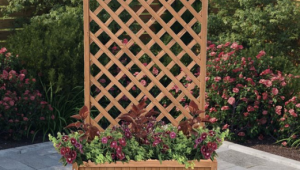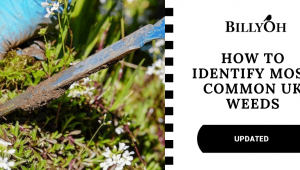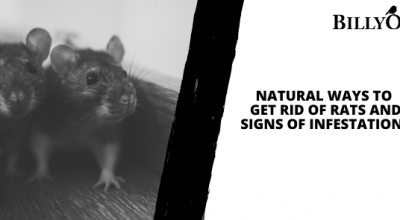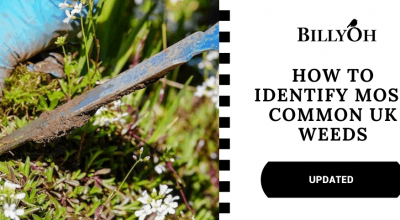Jump to:
In addition to garden sheds, bird aviaries make an excellent addition to yards. If you have a variety of species of bird and you treat them as pets, you should be considering their freedom. By this we meant allowing them to stretch their wings once in a while.
Not only does an outdoor aviary offer that leisure, but also the protection that your feathered friends need. Access to sunlight is beneficial for them, too, from their skin to the health of their feathers.
So, thinking of building one in your garden? That’s great! But a certain amount of planning is necessary, so we’re here to help you.
Key takeaways:
- For people who have birds as pets, investing in aviaries is a major consideration.
- Next is the type, size, and number of birds. All these contribute to how successful and beneficial the outcome could be for them.
- Sure, building an outdoor aviary can be easy. Yet a guide like this is crucial especially if you want to avoid pitfalls in the future.

Outdoor Bird Aviary Explained
A small cage would suffice if you only have one or a pair of parrots, let’s say. But if you have numerous feathered friends or extra-large birds, you’ll want to think bigger.
Birds should be out in nature, at least sometimes, so keeping them locked at home can be brutal on their end. This is where an outdoor bird aviary comes into play.
It serves as the ideal sanctuary, providing enough space for them to spread their wings and fly. Most importantly, all without leaving your premises.
Now you might be thinking about protection against the harsh weather. What if it rains? Will the birds end up getting soaking wet in the outdoor aviary?
And what about those blistering hot days? Does their so-called “haven” offer the protection they need from the sun?
These concerns can be easily put to rest when you know exactly what it takes to make an aviary that is safe and suitable for every type of bird you have. This is what this guide is all about!
We’ve listed down the important steps you don’t want to miss when building an outdoor bird aviary. From determining the best size to positioning your birdcage in the best spot, we’ve got you covered!

Building an Outdoor Bird Aviary
An outdoor aviary means a healthier environment for your birds. This is because they get more fresh air and sunlight.
And by utilising your backyard, you’ll likely have more space and be able to build a larger size, which is something that is also better for your birds. Without further ado, let’s get into the list!

1. Determine the aviary and bird sizes
To get the most out of your birdhouse, provide your feathered friends with as much space you can afford. Start by measuring up the useable space you can offer.
This can help you determine how big your outdoor aviary can be. Having a large aviary means you are giving your birds the freedom to fly around and enjoy themselves.
The overall size of the aviary usually depends on the species. Suppose you have large parrots. They’ll require a much larger flight case compared to finches and budgies which can live in a normal-sized birdcage.
Here’s a chart of aviary sizes, courtesy of Here Bird.
- Small birds: Width: 20″, Depth: 24″, Height: 24″
- Medium birds: Width: 25″, Depth: 32″, Height: 35″
- Large birds: Width: 35″, Depth: 40″, Height: 50″
- Extra-large birds: Width: 40″, Depth: 50″, Height: 60″

2. Look for the ideal site
When it comes to positioning your aviary, it’s best to locate it within view of your house. This allows you to watch the birds from the comfort of your home or from your garden while working or relaxing.
Positioning it in your garden also means birds can be closely associated with their natural habitat. But we don’t recommend putting them under a tree as this will limit their source of sunlight.
Trees also provide easy access for predators like rats and cats. They can get to the upper part of the cage and attack the birds.
Top tip: Don’t position the aviary near noisy mechanical devices, such as air vents or air conditioning units to avoid discomfort to birds.

3. Consider positioning
Birds are sensitive to wind, chill, and both cold and heat stress. On top of planning the location, it’s also crucial to take prevailing winds and sunlight intensity into consideration.
You have to provide the birds with a protected area away from the sun, rain and wind. To ensure that the cage is safe enough, at least one third to half of the cage should have a roof covering enclosing one or two sides, depending on the current wind direction.
And if you happen to live in an area where temperatures can soar, make sure the aviary isn’t placed in an area that gets excessively hot. The best positioning is south where your birds get the morning sun.
4. Choose an aviary design
Do you think a portable aviary would suit your needs best? Or are you thinking of building a walk-in birdcage, or an open-top one?
You also need to think about the specific species design requirements. For example, hanging baths for lories and adding a water feature for birds to drink on.
The design requirements (if there’s any) should be able to fit in the aviary design you opted for.

5. Set the right foundation
An outdoor aviary requires a sturdy foundation. Without it, the weather will erode the base and earth floor beneath the structure, making the building unstable.
This can also result in birds playing in the dirt with the possibility of picking up parasites. So if you’re constructing a birdhouse, pick the right materials for the foundation.
There are two main types of foundation ideal for outdoor aviary and these are:
- Soft aviary foundation. With this type of foundation, wire mesh is needed at the base to prevent predators from digging into the aviary. On top of the aviary mesh flooring, place gravel so water will be able to drain straight through and into the soil.
A soft aviary foundation is easier to set up and move to another location in case you decide to change the site of your aviary.
- Hard aviary foundation. This type of foundation uses materials such as concrete, flat bricks or paving stones. Given that these materials are hard, they help secure the aviary from predators. Hence there’s no need for chicken wire installation.
If you plan on building a large-sized aviary, a concrete foundation is recommended. It provides a much stronger, more durable and stable base than the soft version.

6. Materials for the panel frames
Should you use wood or metal for the aviary panel? This will depend on your budget and needs.
A metal frame is stronger, more durable and won’t be chewed by your birds. But it’s on the expensive side; not to mention it’s harder to cut and work with (unless you have a metal cutting tool).
It may also require extra rust protection. Yet again, if you have the means and can provide TLC, this material is your best bet.
A wooden frame, in contrast, is a lot cheaper and easier to cut. But unlike metal, it won’t last long and might be nibbled by your wild birds.
Plus, it needs to be treated to prevent rotting. With the proper care and maintenance, you can stick to this type of material.
7. Door construction
For an extra layer of safety, experts recommend including 2 sets of doors with a small walkway between them. This prevents any birds from flying out when the door is opened.
The door should also have a set of hinges so it can swing open. A padlock and a door latch would also be helpful as some smart predators like raccoons can open normal door latches.
But if you have a small aviary and can only fit one door, make sure to create a self-closing door. Do this by attaching a spring to the sides of the top of the door.
Or you may consider building a door that’s half the size. Birds tend to fly upwards; with this design, they’ll have a smaller chance of escaping.
Top tip: Birds don’t like flying into anything that is hanging. Attach beads or strings, or wire mesh door cover as an alternative, to the side of the door.
8. Putting the roof
It’s important that your aviary has a roof that can provide shade for the birds during scorching days. Placing a section of waterproof cloth on one or two sides of the aviary also works wonders.
And if you don’t like the idea of predators sitting on the roof and disturbing your birds, make the roof angle steeper. An angled roof also drains the water, so it’s a win-win!

9. Additional considerations
Temperature control in both hot and cold climates are often overlooked in aviary construction. But not anymore!
Make sure to provide your birds with extra protection in case of local weather extremes. This includes snow, wind, and extreme heat.
Also, consider the overall strength and endurance of your birdhouse to withstand these kinds of weather extremes.
Round-up
A safe and strong building structure is essential for an outdoor aviary. We hope these considerations will help you build the perfect garden aviary for you and your birds to enjoy!
Like this post – why not share it?
FAQs
Do you need planning permission to build an aviary?
You won't be needing one if your aviary is below a certain size and height. It's likely to fall under Permitted Development rules, though.
But to be sure, we recommend checking with your local planning authority.
How do you keep an aviary warm in the winter?
An insulated and cosy hideout like tent will do the job in keeping them warm. When it comes to bathing them, make sure the birdbath's water is warm.
Remove the water quickly after to avoid it getting cold.
How do you keep an aviary floor clean?
Keeping the aviary floor clean is surely a big challenge. But what you can do is to remove the birds in the aviary once a year, turn the ground and lime it.
Then bring back the birds in after a period of time.













What do you think ?